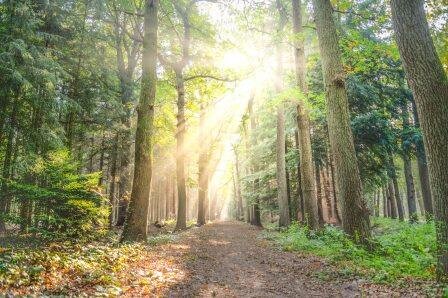14 Lessons For the Year Ahead (Second of Two Parts)
If you followed along in my last blog, I outlined the first of my top takeaways from the year 2020. These have come together for me as a great set of lessons I’ll carry forward to guide me through whatever the new year ahead brings my way.
My 2020 brought up themes of flexibility, embracing what-is, the importance of recalibration on-the-fly, and skillful rest. I invite you to reflect on your year in a similar way, and perhaps use what I’ve learned for yourself as well.
Here are my takeaways from the past year, part two:
Lesson 8: You Gotta Take Time to Feel All the Feels. Making space for the huge variety of feelings and emotions triggered during stressful times is critical. Fear and anxiety, grief and anger – the more challenging emotions we run into – must be opened to so our systems can metabolize those energies and move forward with greater wisdom and clarity. It takes trust to do this work; trust that you can handle those emotions and not get lost in them. If you open to them and let them do their work, they’ll have a natural cycle of build, release, and completion, just like other natural processes. This is a powerful practice that is the gateway to building what I think is the most important skill you can develop: emotional intelligence.
Lesson 9: Routines, Structure, Rituals & Disciplines Are Even More Important in Chaotic Times. During my most-frazzled moments of 2020, it was incredibly tempting to drop my disciplines and say “to hell with it.” I was just too damn tired to motivate to meditate, exercise, journal, or engage in my usual practices. But I found that the routines were what held the ship together, giving me the resources I needed to continue through the challenges of the year. During tough times I encourage you to double down on what works for you. This could mean calling it a night at a particular time, a morning self-reflection or movement routine, gratitude practices, regular exercise, or the simple rituals you bring to opening and closing your workday. Your routines don’t have to be rigid or complex; the point is to create a system of consistency that works for you. This will give your life some riverbanks that gently contain all that’s happening within and around you.
Lesson 10: The Kids are Crazy Adaptable. As I watched my 11-year-old son deal with everything the year brought, I noticed he and his cohort of friends were much more flexible and adaptable than most adults were being. They complained very little, and flowed easily into new ways to find enlivening connection and have fun given the new constraints on their lives. The key, I believe, was their ability to be adaptable, or have a strong Adaptability Quotient (AQ) -- see Lesson 1 in this series for more about this one.
So, why was it so much easier for the kids? Adults, I think, are used to having much more agency so when pandemic restrictions dropped in, it was jarring to our normal sense of personal power. Children, living in an adult world, are much more used to living within a system of constraints that aren’t their own, so they’re used to flexing and adapting within those systems in order to express themselves fully and freely. As adults, we’d be well-served to ask ourselves how we can follow our kids’ lead and continue to show up fully and with positivity, even in the face of constraint in our environment.
Lesson 11: Mindful Transitions are Critical. This year I finally put into place a practice I long knew I needed but never had the discipline for – mindful transitions. These were small and large spaces between activities where I consciously took the time to get grounded, find completion from whatever had just happened, and reorient to what was coming next. On a small scale this might look like five minutes of breathwork (see Lesson 14 below) or movement between clients. Or on a larger scale, when coming back from time away like my regular solo camping trips, I created a transition day to get reacquainted with my family and life in the “front country,” slowly returning my attention to work and family life before just jumping into the new actions awaiting me on the other side.
These transitions helped me integrate the benefits and lessons of my previous experiences and come into full presence and focus for what was coming next. Before this, I all-to-often jumped from action to action (sometimes frantically), resulting in feeling fried at the end of a vacation or disconnected from the small victories of a great day. Building conscious transitions into my year took really taking ownership of my time and space, and was a huge win for my energy, relationships, and mindset.
Lesson 12: When Things Aren’t Going Your Way, Call a Pro. I learned this lesson the hard way (of course). This time last year, I’d hung up my running shoes during my favorite time of year due to a foot injury that I couldn’t get under control on my own. I was incredibly disappointed to be missing the joy of winter running, but I’m self-reliant, and I help people solve their pain every day so certainly I could figure this out for myself, right?. Finally realizing I couldn’t do it on my own, I reached out for some expert physical therapy with Dr. Nick DiSarro of ResilientRx, and in one session he set me on the right path to finally unlocking this nagging pain. I’m incredibly grateful for his help, as he got me back to happily running throughout the rest of the year, and for the lesson baked into this experience: don’t stay stuck, ask for help!
Lesson 13: You Have to Prove to Yourself Regularly That You Can Do Something Hard. Our systems evolved to conserve energy, and we tend to love what’s predictable and habituated in our lives. I LOVE me some R&R; there’s a part of me that could sit in a hammock forever, especially if I’m in the midst of a great meditative moment. So it’s critical to consciously push ourselves out of the ruts we’re in – even the successful ones!
Interestingly, I’ve found that the flip side of mindfulness is that being in the “now” can keep us from getting into the “what might be.” Sometimes the present moment as it is just feels good, so why would we want to leave it? Breaking out of our comfort zones is literally painful, and I’ve found that at times my mindfulness practice says to me “Hey, slow down bro, what you’re doing hurts and it’s scary. Maybe you’re going too hard.” It’s a huge balancing act – sometimes rest and savoring the moment is indeed needed. But so is effective action, and occasionally doing something radically new. I’ve had to learn how to consciously turn OFF the mindfulness at times so I can break out of my ruts. This edge is a huge paradox baked into the practice of mindfulness.
Lesson 14: Soften and Breathe. In bodywork and movement circles, there’s a saying that goes, “how you walk through the room is how you walk through life.” In 2020 I learned a different take on that phrase: “how you breathe is how you walk through life.”
Breathing is our foundational body-based skill. When I’m working with a new Rolfing client the breath is very often where we begin; it’s such a basic part of our lives we aren’t really aware of it most of the time. In fact, in 2020 I built an entire Mindful Movement series that centers around our ability to find ease and fullness in our breathing. When we don’t breathe easily and fully, we’re pretty typically stressed and white-knuckling our way through life.
Even though I teach more-conscious breathing to most of my clients, I too fall into the habits of tense or limited breathing often, especially this past year. And I noticed that as my breath became limited or tight, so did my body and my thinking. My actions then followed, becoming more rigid and one-dimensional, and the space of possibility then becomes hard to find. So my own focus on easing my body and allowing fullness of breath was an incredibly important practice for me through the challenges of the year. In fact, it was the core component of my ability to hold the emotional turmoil (see Lesson 8) and lean into the challenges of the year. And when I could find that spaciousness within, ease and flow without soon followed.
What lessons did 2020 offer you? What will you take forward into the new year? I’d love to hear your stories about what the year taught you!

